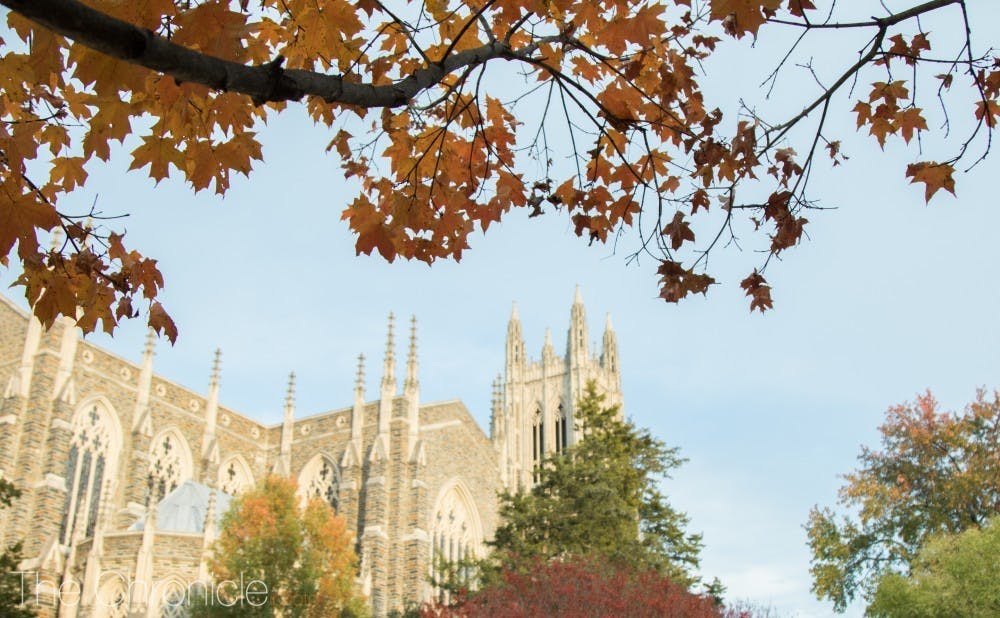The Asian American Studies Program officially arrived on campus Spring 2018, and for program director Nayoung Aimee Kwon, its creation was the culmination of over a decade of student work on campus.
The program does not yet include a major, minor or certificate, but it offers courses that give “interdisciplinary perspectives on the current-day status of Asian Americans and Pacific Islanders in our society,” according to its website. Kwon, associate professor in the department of Asian and Middle Eastern studies, mentioned that the program also aims to create an Asian Alumni Affinity group by this fall.
For Kwon, the creation of the program mirrors the push for programs studying other disadvantaged groups, such as programs in gender, African and African American, Native American and Latinx studies. She said that although the program faced years of resistance since students began advocating for it in 2002, there remained strong student support nonetheless for the creation of the program.
“There were teach-ins, faculty advocacy and demonstrations,” Kwon said.“We experienced various ups and downs, depending on the momentum.”
After years of unsatisfactory outcomes, activists realized the best avenue to sustain momentum was to explain their strategies to younger classes. As a result, leadership would remain vibrant and strong, even as initial advocates left the schools. Additionally, activists worked to dismantle the misconception that these courses are intended for only Asian American students.
“[AASP advocates] are not catering to a minority group of self-identifying students,” Kwon said. “[AASP programs] are intellectual projects to educate the entire university, about the history of Asians in America, like the history of women, or African Americans or Native Americans, and how these histories have been an integral part of America’s history and society from inception.”
The necessity for this historical understanding became clearer than ever in February, when Megan Neely, then-director of graduate studies for the Master of Biostatistics program, encouraged Chinese students to refrain from their native language in casual conversation. The incident attracted national media attention.
Kwon emphasized that this “tip of the iceberg” incident highlights how bigotry thrives at Duke and demonstrates how racism can go unchallenged when outside of the traditional black-white binary.
“Race relations in the U.S. and especially here in the American South have understandably focused on the black and white conflict,” Kwon said, “but that sometimes prevents us from seeing the common structural challenges faced by other ethnic and racial groups, in new forms of exclusions. We also do not think of this as an isolated incident impacting only a certain group of students from a certain national origin, but is a symptom of a wider culture of hate and bias toward minorities, and toward immigrants, with wider repercussions.”
As AASP develops in the coming years, Kwon hopes that students will become more conscious of this reality.
But much progress is still needed in terms of cementing the program’s place on campus. According to Kwon, Duke has placed a moratorium on new certificate programs, and AASP still needs to hire more faculty in order to have the capacity to offer a major or minor.
However, there are other ways in which the program can grow. Kwon is expecting to augment the FOCUS program with a new cluster specific to the ramifications of anti-Asian American sentiment in American history, especially as it pertains to immigration. She also seeks to secure an AASP-specific learning space, as right now the program’s accessible spaces are mainly limited to shared classroom spaces in the Center for Multicultural Affairs.
Despite the barriers to AASP’s survival, Kwon is excited to complete what years of students have built. She recognizes the fact that Duke and a few other schools—such as Northwestern University, Cornell University and University of California, Los Angeles—are alone in this effort, and she emphasized that other universities have even further to go and face even more entrenched resistance.
“Imagine, if those of us at an elite university like Duke must fight tooth and nail for this basic narrative to be taught in our curriculum, what the rest of the country is struggling with,” she said. “There are many glaring blind spots in the way we teach today. Our role as a university and as faculty is to truly desegregate the university and to take up the responsibility of teaching history and its ongoing legacies in a more nuanced way.”
In this way, Kwon said, Duke has the unique opportunity to act as a standard-bearer for other elite institutions by setting the example of how a history-aware campus behaves.
Get The Chronicle straight to your inbox
Sign up for our weekly newsletter. Cancel at any time.

